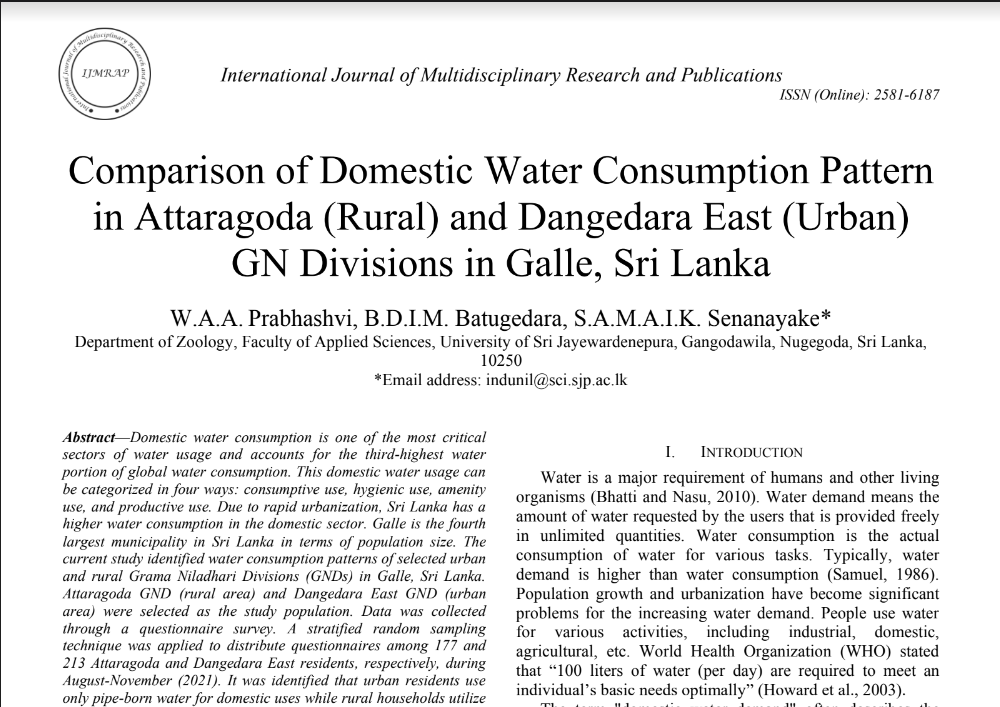W.A.A. Prabhashvi, B.D.I.M. Batugedara, S.A.M.A.I.K. Senanayake
Published in International Journal of Multidisciplinary Research and Publications
Domestic water consumption is one of the most critical sectors of water usage and accounts for the third-highest water portion of global water consumption. This domestic water usage can be categorized in four ways: consumptive use, hygienic use, amenity use, and productive use. Due to rapid urbanization, Sri Lanka has a higher water consumption in the domestic sector. Galle is the fourth largest municipality in Sri Lanka in terms of population size. The current study identified water consumption patterns of selected urban and rural Grama Niladhari Divisions (GNDs) in Galle, Sri Lanka. Attaragoda GND (rural area) and Dangedara East GND (urban area) were selected as the study population. Data was collected through a questionnaire survey. A stratified random sampling technique was applied to distribute questionnaires among 177 and 213 Attaragoda and Dangedara East residents, respectively, during August-November (2021). It was identified that urban residents use only pipe-born water for domestic uses while rural households utilize not only pipe-born water but also groundwater. The rural area had a higher mean total water consumption (72 Liters/Capita/Day) than the urban area (62.4 Liters/Capita/Day). Mean total water consumption differed significantly between rural and urban areas (p<0.05). The activity that utilized the most water was washing clothes, followed by bathing and kitchen washing in both regions. There were significant differences in total water consumption for kitchen washing purposes, bathing and sanitary purposes, gardening purposes, animal husbandry purposes, clothes washing, and other washing purposes between rural and urban areas (p<0.05). Water consumption for kitchen washing and bathing was slightly greater in urban areas than in rural areas. It can be attributed to modern lifestyles, such as having more convenient cooking wares, flushing toilets, and shower facilities among urban residents. Washing clothes, gardening, animal husbandry, and other washing activities increased water consumption in rural areas. Households in urban areas that depend entirely on pipe-born water had a higher monthly domestic water consumption cost (Rs.612.70) than rural areas where residents utilize groundwater and pipe water. Most urban residents have switched to pipe-born water sources due to the contamination of water sources with urbanization and garbage accumulation. Most rural residents believe tap water is undrinkable due to its flavor. According to the results, households in an urban area use only pipe water for their domestic purposes, and rural households use pipe born water as well as groundwater for their domestic purposes. Laundry is the most significant water-intensive activity in both study regions


